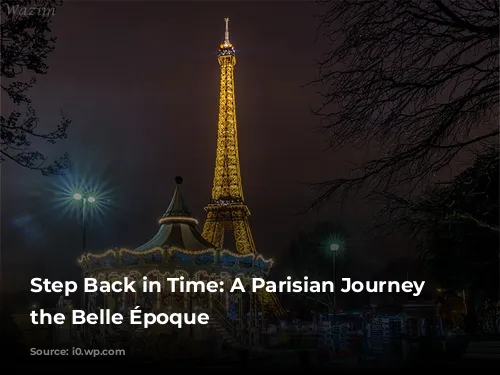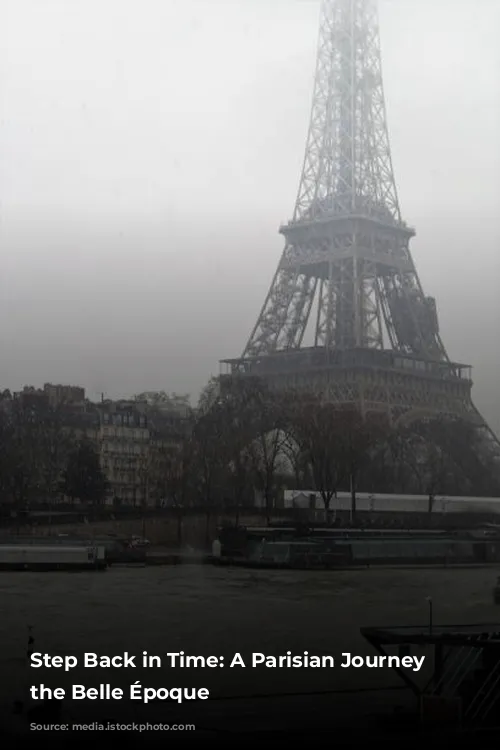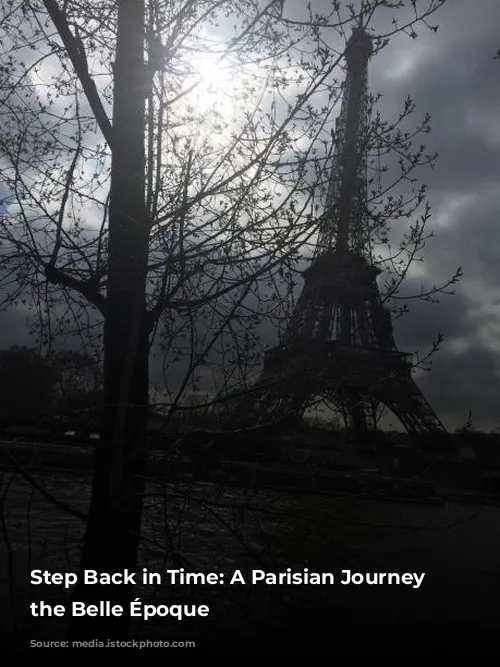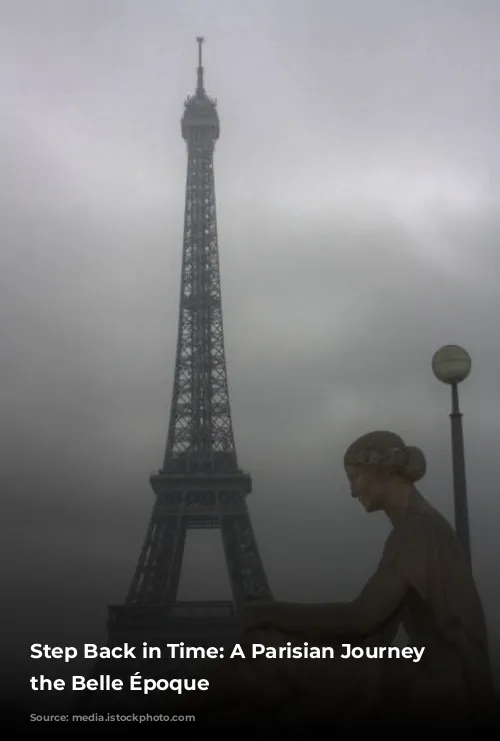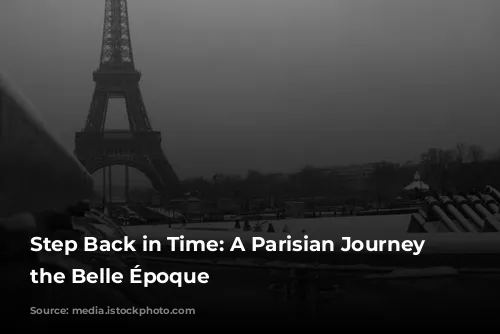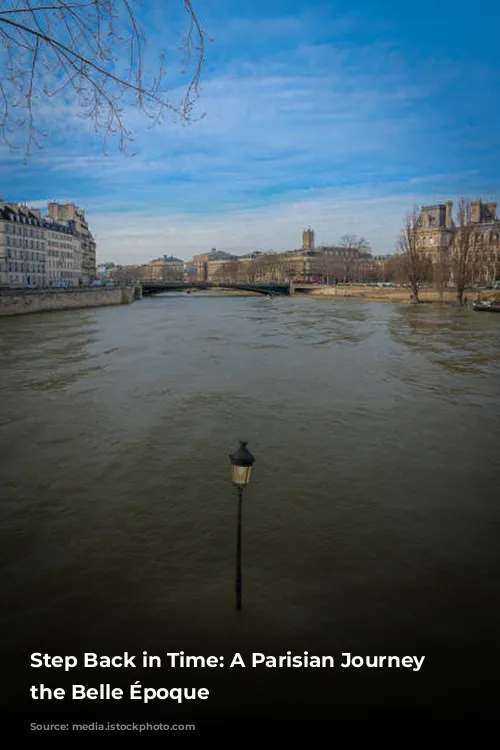Imagine yourself strolling through the heart of Paris. The Eiffel Tower, a testament to engineering prowess, pierces the sky, while the ornate façade of La Samaritaine whispers of a bygone era. Even the city’s metro entrances, with their dark green wrought-iron railings and vintage lamps, transport you to a time of boundless excitement and innovation. Welcome to the Belle Époque, a period of unparalleled creativity and progress that continues to shape Paris today.
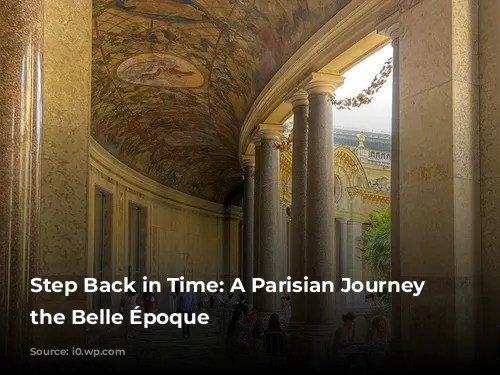
A Golden Age of Parisian Life
The Belle Époque, meaning “beautiful era”, spanned the last four decades of the 19th century. It marked a period of remarkable growth and prosperity for Paris, leaving behind a legacy of iconic architecture, art, and culture that captivates visitors to this day. The Franco-Prussian War of 1871 had ended, ushering in an era of peace and progress. Paris buzzed with activity, its Grands Boulevards teeming with life as Parisians flocked to the city’s shops and cafes. Technological advancements revolutionized transportation, with the metro system, inaugurated in 1900, replacing horse-drawn carriages. The creative spirit flourished, evidenced by the artistic masterpieces of Matisse and Toulouse-Lautrec, the emergence of cinema, and the vibrant Parisian cabaret scene. It was truly a golden age for Paris.
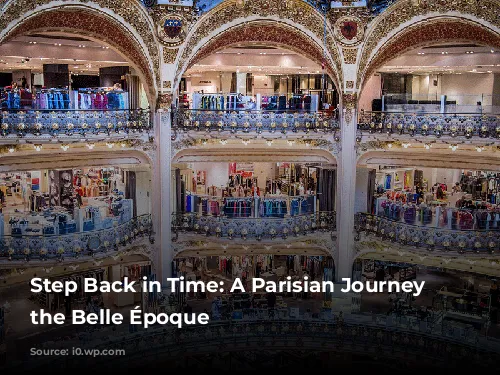
A City Embracing Innovation
The Eiffel Tower, a symbol of the era, stood as the world’s tallest structure, showcasing the pinnacle of engineering at the time. Its daring design, crafted from 18,000 meticulously numbered pieces, signaled a new era of progress. Another testament to Paris’ commitment to innovation was the Gare d’Orsay, opened in 1900, the world’s first station built for electric trains. Today, the Musée d’Orsay stands as a testament to this heritage, with its beautiful Art Nouveau station clock a constant reminder of the building’s past.

Art Nouveau: A Flourishing Style
The Art Nouveau movement, characterized by its elegant, flowing lines inspired by nature, found a fertile ground in Paris during the Belle Époque. The metro stations, designed by the renowned architect Hector Guimard, became iconic examples of the style, boasting elegant cast-iron railings and decorative iron and glass canopies. You can find Art Nouveau embellishments across the city, from the façade of La Samaritaine to the grand interiors of Belle Époque restaurants. One striking example is the 29 Avenue Rapp, home to one of the most impressive Art Nouveau doors ever created.

A Culinary Journey Through Time
Paris’ Belle Époque culinary scene was as vibrant as its art. One notable establishment, Le Boullion Julien, transports diners to the past with its mahogany bar, glass canopied ceiling, and walls adorned with intricate plaster moldings. The Bouillon restaurants, which offered quality meals at affordable prices, remain a popular choice today, providing a unique opportunity to savor a taste of history in art nouveau surroundings.
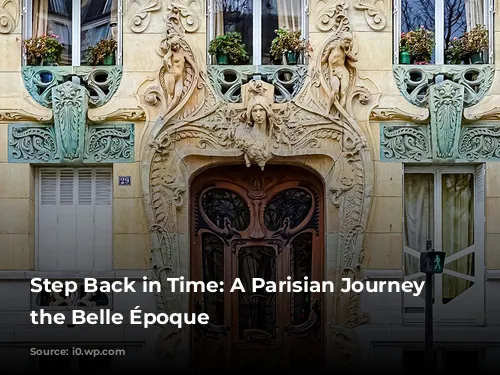
Grand Elegance: Le Train Bleu
The Belle Époque restaurant Le Train Bleu, located at the Gare de Lyon, is a true masterpiece of extravagance. Its lavish decor, designed to attract affluent travelers heading south for the summer, embodies the Art Nouveau style in all its grandeur. Golden ceilings adorned with chandeliers, walls adorned with paintings, and meticulously laid tables complete with exquisite china and silverware create an experience fit for royalty. The finest brasserie cuisine is served here, and while the prices may be higher than elsewhere, it is a reminder that you’re dining in a restaurant frequented by the likes of Brigitte Bardot and Jean Cocteau.
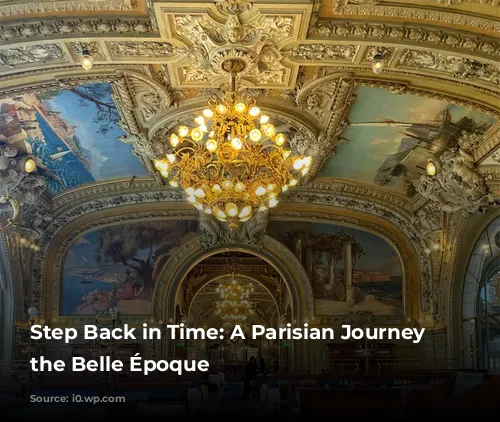
Walking Through Time
To truly experience the Belle Époque in Paris, consider exploring these areas:
Across the Alexandre III bridge: This elegant bridge, built in 1900, is a testament to the era’s love of grand architecture and elaborate decoration. Admire the stately lampposts, intricate carvings, and gold-plated statues, all reflecting the Belle Époque spirit of opulence. The bridge leads visitors across the Seine to the Grand Palais and Petit Palais, exhibition halls that once showcased the latest in art and design.
The Grand Palais and Petit Palais: The Grand Palais, with its vast, elegant domed roof supported by an impressive iron and steel frame, was a masterpiece of engineering. Currently undergoing renovation, it will reopen in 2024. The Petit Palais, home to the City of Paris Museum of Fine Arts, remains open, offering a glimpse into the beautiful interior with its spiral staircases, stained glass windows, and ceiling murals. Be sure to enjoy a coffee at the café, nestled in a charming little garden.
The Opéra Garnier and the Grands Boulevards: While the Opéra Garnier, opened in 1875, harkens back to the grandeur of the 2nd Empire, the Grands Boulevards were the heart of Belle Époque excitement. It was here, on Boulevard des Capucines, that the Lumière Brothers first screened their films to a paying audience, marking the birth of cinema in Paris. Grand department stores, such as Printemps and Galéries Lafayette, flourished, showcasing the era’s elegant fashion and lifestyle.
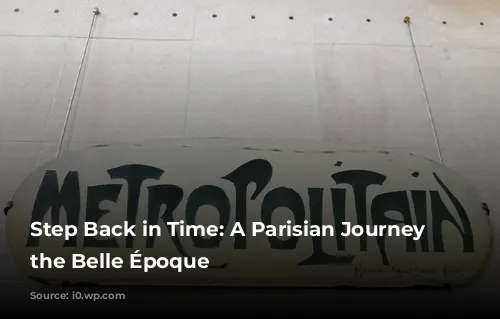
Hidden Gems of Art Nouveau
The Abbesses metro station: This station, a marvel of Art Nouveau architecture, features a spectacular glazed canopy and elegant wrought-iron railings. The surrounding old-fashioned street lamps add to the Belle Époque ambiance.
Montmartre and St Jean de Montmartre church: Montmartre, once a vibrant hub for artists and musicians, retains its charm, with its cafes, dance halls, and cabarets like Le Chat Noir, the Moulin Rouge, and the Follies Bergères. Across the street from the Abbesses metro station, the St Jean de Montmartre church, built at the turn of the century, is a testament to the innovative use of reinforced concrete and red brick, earning it the affectionate nickname “Notre Dame des Briques”. Its Art Nouveau interior, with patterned brick and bronze, blue, and gold ceramics, is a sight to behold.
Musée de Montmartre: This museum offers a fascinating glimpse into Montmartre’s history, including the Belle Époque. Explore photographs of the Moulin Rouge and its dancers, period posters for venues like Le Chat Noir, and exhibits on the popular shadow puppet shows of the era.
A Timeless Legacy
As you stroll through the streets of Paris, keep your eyes open for the remnants of the Belle Époque. Every corner holds a story, from the grand architectural marvels to the delicate details of Art Nouveau design. The Belle Époque is more than just a period in history; it is a vibrant spirit that continues to infuse Paris with its unique charm and elegance.
